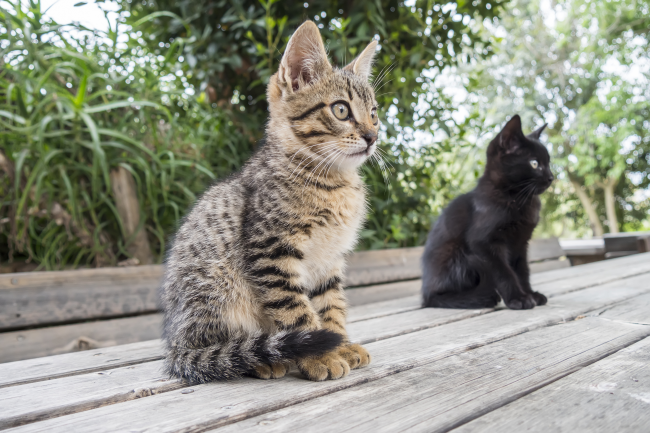
For some people, one cat would supply all entertainment and companionship they would ever want. But for others, once the feline love-bug has bitten, they can’t imagine stopping at just one cat! For those who are considering adopting a second kitty into the mix, here are a few tips on how to integrate kitty #2 to the first feline’s territory. Though it can be a tricky business, the transition may be seamless when a few simple tips are adhered to.
Bringing Your Second Cat Home
- Gender and age considerations. Cats are already independent and territorial creatures, so adding a new-comer to the equation might ruffle a few feathers. In order to avoid any unnecessary conflict, consider bringing in a younger or smaller kitty home. If you can, choose one of the opposite sex than your first cat. (Make sure the cat is fixed!) The last thing you want in your home is feline-filled drama; and if biting begins, here is how you address the problem.
- Give the new cat a complete physical. Make sure the little fellow has been thoroughly checked by a vet to ensure there are no parasites (either topical or internal) that could put your other kitty in danger. If there are any issues, viruses, colds, fleas, etc. that need to be addressed, keep the cats separated until both are healthy before introducing them.
- Bring the new cat home, but keep him in one room for a few days. This might seem harsh and restrictive, but these first few days are critical for a new cat. He must identify this place as his new home where there is food, water, a place to sleep and eliminate, etc. This will also give your first cat an intuition (and some very distinct smells) that a new cat is in the house, so that when the introduction occurs it will not be a complete shock.
- Introduce the cats’ fragrances to each other. Taking two cloths, rub each cat with one, and then bring each opposing cloth to the other cat. Allow them to sniff the cloth, and become familiar with the other cat’s odor. When you finally bring the cats in the same room, give them plenty of space to approach each other and familiarize themselves with each other. Once the initial introduction has been made, and the cats seem to tolerate (maybe even like) each other, then both cats can roam the house freely.
- Play equally. Sometimes a younger kitten might be more tempting to play with, or might generate more attention than the older cat. Resist this urge to avoid territorial or “jealous” behaviors to incite in the first cat. By affirming the first cat’s place in your heart, he may be able to accept the second cat’s presence in the family much quicker than if there were to be a rivalry between them.

